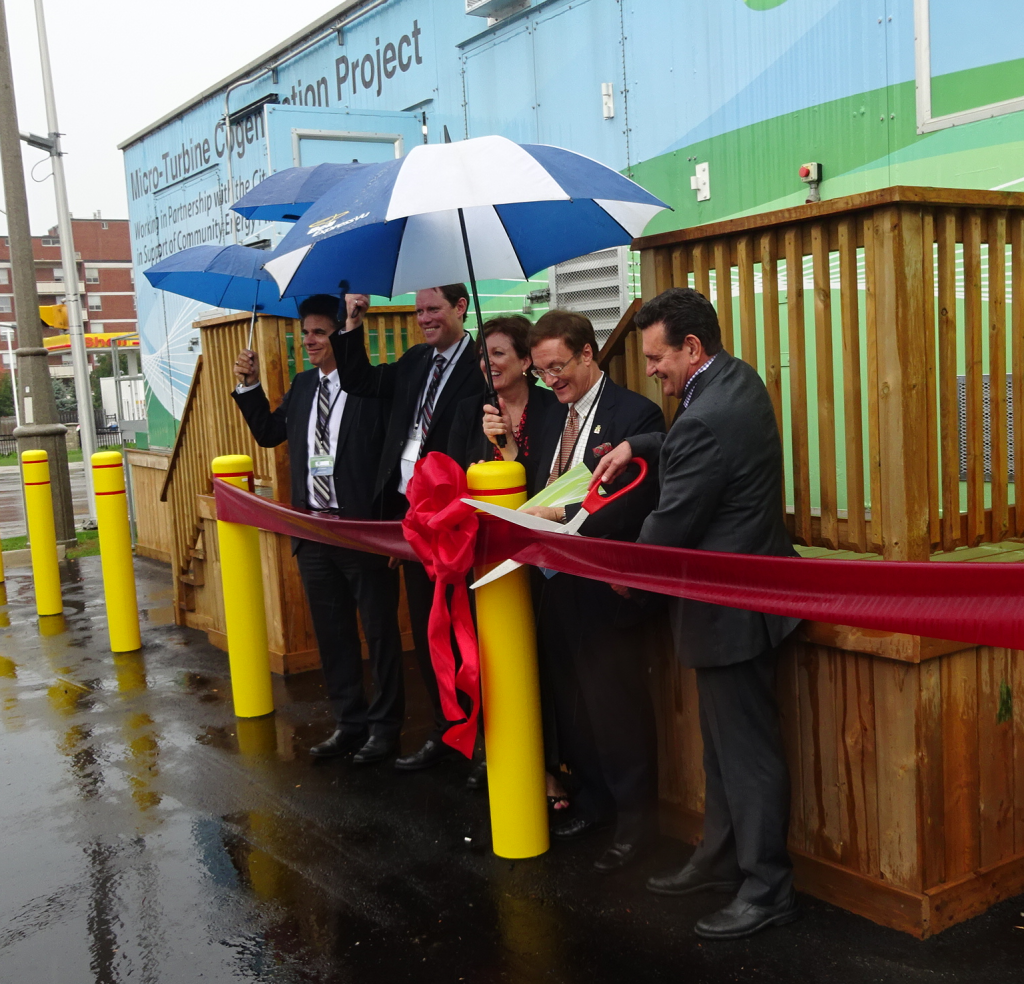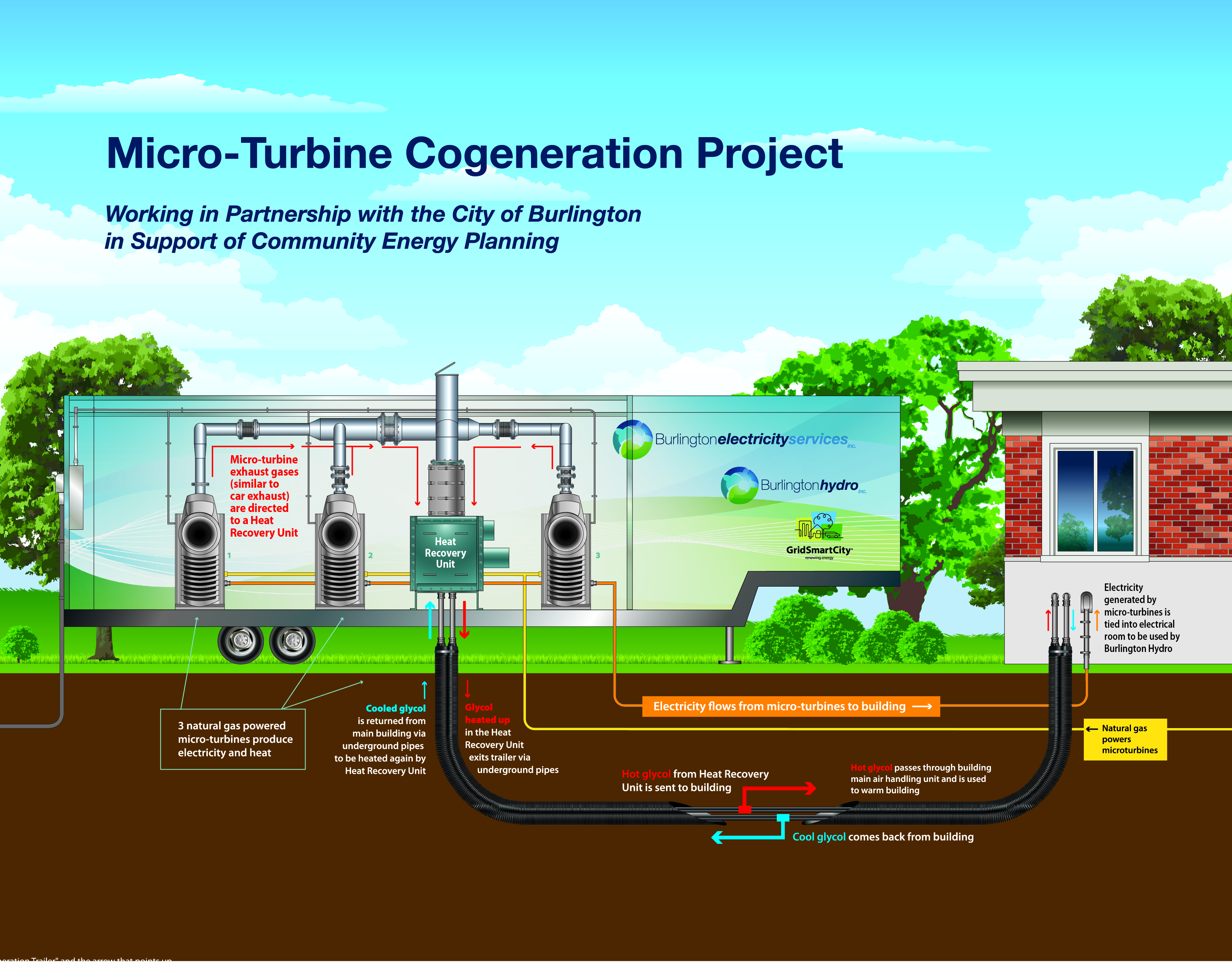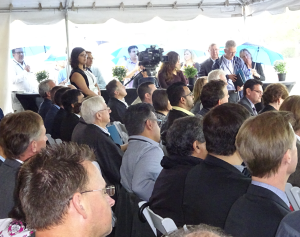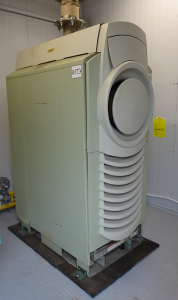September 30th, 2015
BURLINGTON, ON
Standing in rain that would not stop – some sixty people involved in the electrical generation business listened to polite speeches and cut a large red ribbon to open a pilot co-generation station at the south end of the Burlington Hydro offices on Brant Street.

Cutting the ceremonial ribbon is Deputy Mayor and ward 1 Councillor Rick Craven. To his right are : Bob Delaney, MPP, Parliamentary Assistant to the Minister of Energy, MPP Eleanor McMahon, Hydro President Gerry Smallegange.
Defined as a Micro Turbine Cogeneration Plant it is part of the City of Burlington’s Community Energy Plan (CEP).
Natural gas is fed into the unit which then produces both electricity and heat – enough to heat one third of the Burlington Hydro offices on Brant Street.

Three micro turbines and a heat recover unit in this micro co-generation project produce 90kv of electricity and enough heat to take care of one third of the needs of the the Hydro head office on Brant Street;
Bob Delaney, MPP, Parliamentary Assistant to the Minister of Energy explained that “Projects like this one not only offer a sustainable way to generate electricity, they can also provide valuable insights for other organizations considering the benefits of future cogeneration or district heating projects in the Burlington area.”
As a central partner in the development of the CEP, Burlington Hydro has committed to demonstrating technologies and evaluating their effectiveness in commercial and larger residential buildings by undertaking certain pilot projects through its affiliate, Burlington Electricity Services Inc.
“Increasing sustainable local energy generation in ways that support the City’s economic competitiveness is an important objective identified in the Community Energy Plan,” says Deputy Mayor Rick Craven, and Ward 1 Councillor. “Not only does this project represent a positive step forward in the implementation of that plan, but because the plant is self-contained and portable, it is well-suited for permanent relocation at sometime in the future.”

The dignitaries had to stand in the rain to speak to the guests who were tightly packed inside the tent.
An interconnection into the building’s electrical supply and heating system produces 90 kW of electricity, enough to offset one third of the building’s peak load and provide sufficient heat for much of the building.
District heating can provide heat for multiple buildings from a single heating plant. Hot water or steam is distributed to these buildings through underground piping. This is an efficient source of energy as district heating systems operate at higher efficiencies than individual building heating systems.
“Cogeneration involves the production of electricity and heat simultaneously from a single fuel source,” explains Gerry Smallegange, Hydro President and CEO. “This is more efficient as the heat normally generated through conventional thermal electricity generation is not wasted.”

One of three micro turbines that Burlington Hydro bought for the micro co-generation project that is now operational.
Smallegange explained that Burlington Hydro became aware of a surplus unit in Kelowna BC, “and we bought it for $37,500 – put it on a flatbed truck and built the shed that encloses it all with lumber donated to us by Habitat for Humanity”.

















Who wants to bet this project cost closer to $1,000,000 than $37,500?
Editor’s note:
The $37,500 was the amount paid for equipment that was surplus to the hydro people in Kelowna BC.
The project is a pilot to work towards ways to reduce the cost of energy we use to heat and light the buildings we live and work in. Quite why one would complain when an organization looks for ways to get better value for the funds spent is difficult to comprehend.
Jeez, no edit button: witch = which
Interesting, would it be more efficient if every household, or city block, had it’s own micro-turbine generator? I wonder if is is more efficient then the normal massive generators located in power plants witch are affected by a lot of long distance line loss?